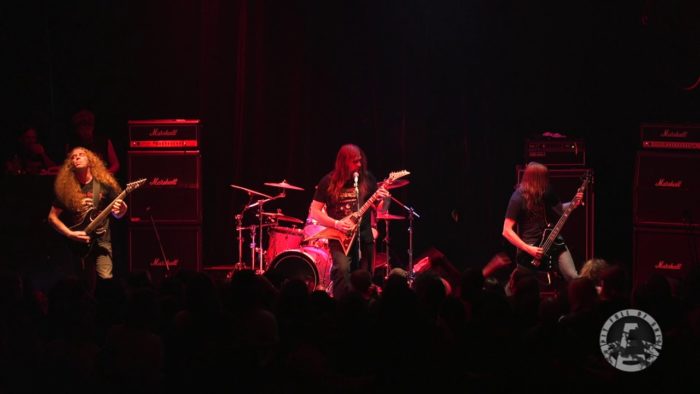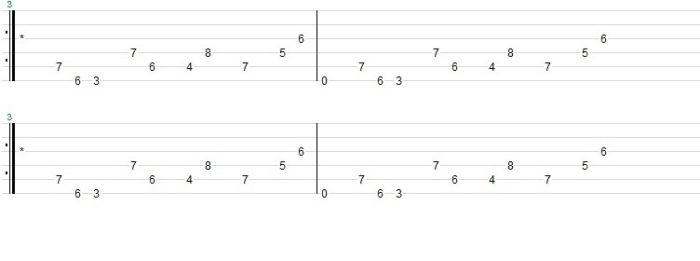
[Sections of this article by Jerry Hauppa].
The Finnish scene has spawned an impressive number of death metal giants, possibly the strongest overall scene with no band searching for shallow fame or popularity and each band exploring their own sound in complete artistic integrity and more often than not achieving powerful results. Though all these bands have captured the hearts and the imaginations of Hessians everywhere, one four-piece has managed to completely change the face of death metal. Releasing one album that elevated metal into being recognized as an intellectual genre in the eyes of the mainstream, so much so that the mainstream metal media fled from this album as no one could commercialize and democratize what was being played here, Demilich were unfairly pushed back into the underground when they deserved adoration from the masses.
Introduction:
A guitar plays an ominous tremolo riff while drums smash through every tom and hi-hat available as the bass smashes with single notes on the beat. The second guitar joins in playing a similar melody but slightly higher. We are being thrown in head first into a place where logic exists but in a slightly altered state as evidenced by the note selection that consists of mainly minor sixths and tritones and the lack of a discernible root note. There is no head or tail to the tremolo riffs as the listener is completely disoriented.
Main melody(0:26):
Fellow writer Jerry Hauppa has offered a tab and an explanation of how to play this riff!

-ENTER THE JERRY-
Here’s what I figured out for that riff. So to my ears they tune between A and A#, and switch between 6/8 and 4/8 at the second bar line, and then from 6/8 to 5/8 at the 4th. You want to imagine the whole thing as a waltz rhythm but those 3rd and 6th measures are in counts that don’t allow it, so I had to change tempo from 115 to 175 bpm for those brief measures to break the triplet feel and go back to even counts while keeping the flow. The whole thing is minor 2nds and tritones and moves around chromatically so it’s very discordant.
By building upon the intervals used in the previous riffs and by confining movement to small chromatic leaps, Demilich build a language that guides the composition and refrains it from being the note salad of jazz. By remaining consistent with note choice and choosing to forego rhythmic consistency not as an attempt in sounding technical but to allow for complete freedom in melody. The relative bounciness of the drums and bass in comparison allows the vocals to follow a simple and catchy pattern through Anti Boman’s trademarked and deep gargle that unlike modern copycats remains decipherable. The riff insinuates that something intricate is about to happen like the conclusion of a scientific experiment and we are witnessing the first steps. The lyrics tell of a battle between the sun and the water that is necessary for life to exist on this planet. There is a strong scientific understanding as the narrator estimates that our sun will become a black hole and gain infinite density and absorb the water of our planet.
War of elements
Water against the Sun
The Sun leading a battle of the war
That will never be done
Sucking the weight of water
Bringing its weakness back
Now possessing an important weapon
The weight that all molecules lack
Counter-melody(0:51):
The previous riff is countered by a melody that takes a few notes from the minor scale while removing some of the previous dissonant notes and playing a pedal-point rhythm like the previous speed metal bands to increase familiarity even more.
Development(1:07):
The main riff returns but this time is only played twice with the vocals briefly returning to describe the horror of what the sun is committing.
The water gets up to the sky
People flying as wind goes by
The riff changes just by lengthening the duration of the notes and emphasizing the second and the fourth beats of the bar as the composition until a lengthy melody consisting of the same notes announces the next riff. The pace has slowed down and the scheming has intensified. Minor seconds and adjacent chromatic notes increase the tension with the tempo change and angular notes like minor sixths take less importance. The bass wanders off playing a tertiary melody. The drums add to the tension expertly by hinting at a full on blast beat but never achieving it. The introductory segment returns as the drums now blast away signifying at this stage that all life is being sucked into the black hole that was once our sun.
-ANOTHER JERRY EXPLANATION-


The dissonance of the riff pushes the tension to the breaking point in combination with its high pitch and at this point in this strange composition the listener begs for some form of release which will occur but not in typical Death metal fashion.
Climax(2:50):
A solo erupts based on the only conventional note relations of the entire composition yet underneath it the rhythm guitar plays a simplified version of the main melody yet holding on to certain power chords to provide an anchor for the lead guitar within the madness. Though short there is a lot going as both guitars play counterpoint to one another and harmonize together on the more dissonant intervals perfectly summarizing the song and creating the image of Earth being swallowed into the remains of the sun.
A new riff is introduced and this time works to push the angularity of the main melody even further by accentuating a minor second in the octave above which is the bread and butter of dissonance core but unlike these gimmicky bands the notes of the main melody are maintained and the added dissonance is not used as a textural tool but for actual composition and to push the final lyrics which are divided into two spaced out sets that accuses the origin of the hatred of the sun for ending humanity’s existence and that as humans there is nothing we can do to stop the creator/universe.
The seeds of their hate
Never die, everything’s too lateThe earth will be gone
All because of the rage of the Sun
The second iteration of the main melody returns and this time shows roots of a new life somewhere else where a new sun is born and yet the mistakes and terrors of the past are somewhat remembered until the song concludes on the germination of that main melody now declaring that the sun must continuously destroy life and like any scientific experiment no matter how many times you attempt the same experiment the final results are always the same. The song flows like an experiment going from one stable position but is pushed into instability until it arrives at a different state of stability.
The melodic shapes found on Nespithe rely exclusively on dissonance and simple chromatic movement while upholding the same dissonant intervals. On the surface this seems to be what even the most banal death metal bands do constantly yet this record sounds completely different. This composition shows that musical ideas are formed from a language. Demilich use a few motifs and by sticking ferociously to these motifs and only ever adding a few notes from the minor scale, they have created their own language from the most musically unstable elements known in western music and by freeing themselves completely from rhythm and more importantly, by constricting themselves to a small set of ideas, functioning like words to create an organized and human language to convey chaos and extraterrestrial works of art. Never has a band created their own universe as well as this record has.
Tags: analysis, analysis article, death metal, Demilich, Finnish Death Metal, Finnish death metal was the pinnacle of metal, hessians, legends, music theory, nespithe, odd time signatures


I love these kind of articles. Thank you!
I suggest metre here, ie, the idea that a piece of music is subdivided by equidistant bars. Except for a relative small part in the middle where the drumming travels on a straight line through a sphere create by the guitar movements, both guitars and drums play in the same rhythm[*], something I here again call characteristic for metal.
[*] A sequence of notes and pauses form a rhythm when disregarding pitch differences. Ludvig Boysen (sp?) described this in his “melodic death metal” article.
Aside: Jazz isn’t just bebop and what came after it. This is an early Jazz recording:
https://www.youtube.com/watch?v=DZXJoCNaE2E
Should qualify as elaborate arrangement of three interplaying voices.
Agreed.
thank you for that correction, very true that the correct notion is metre and not rhythm.
Many thanks to the authors for this and for previous pieces of that kind. While I seldom do it myself, checking out lyrics may really help to understand intent behind development and it is great that you are including them to accentuate thematic changes or to simply set out some landmarks for the listener. My favourite analysis so far is that of Pestilence’s Out of the Body, because it actually helped me to appreciate the song I wasn’t very fond of.
I think that Immolation’s Those Left Behind may be a good material for such analysis because of its developement, its solo (although it’s the solo in Into Everlasting Fire which is a whole chapter in itself) and that one brilliantly confusing moment. But those are the original and technical pinnacles of the genre, while even very simple metal from a third rate band can have a good storytelling qualities and that, above all, should be the goal for aspiring musicians.
Seconding any analyses of Immolation albums. This one from 2015 was great, picking apart “Father You’re Not A Father” from “Close to a World Below”: https://www.deathmetal.org/article/close-to-a-world-below-under-technical-scrutiny/
Looks like I got my wish!
https://www.deathmetal.org/article/analysis-of-immolations-christs-cage/
Thanks guys!
The tabs sections of these articles is getting better! Thanks, Jerry!
Musically they were interesting but those silly vocals always ruined it for me.
Leave the hall
This band was more weird than ballsy. I like my death metal to have some violence also.
Best kind of deathmetal.org article! Thank you. More like this please!
Hell yeah, dmu breaking out the good dishes and silverware with this article. What a dense, meaty feast too. This album is a superlative along some strange axis, and it has the habit of making all other music sound cartoonish in comparison. High-water marks in general tend to make everything else seem like cheap imitations, which is why articles like these are so vital.
This right here is the finest writing on metal available on the web as far as I’m aware. Keep up the great work, hope to see more of your guys’ collaborations!